Light-emitting diodes, commonly known as LEDs, have revolutionized the lighting world in recent years. These semiconductor devices emit light when an electric current passes through them, making them more energy-efficient and versatile than traditional incandescent and fluorescent bulbs.
The light emitted by an LED is determined by the semiconductor material used and the level of doping, which results in various color options specific to spectral wavelengths.
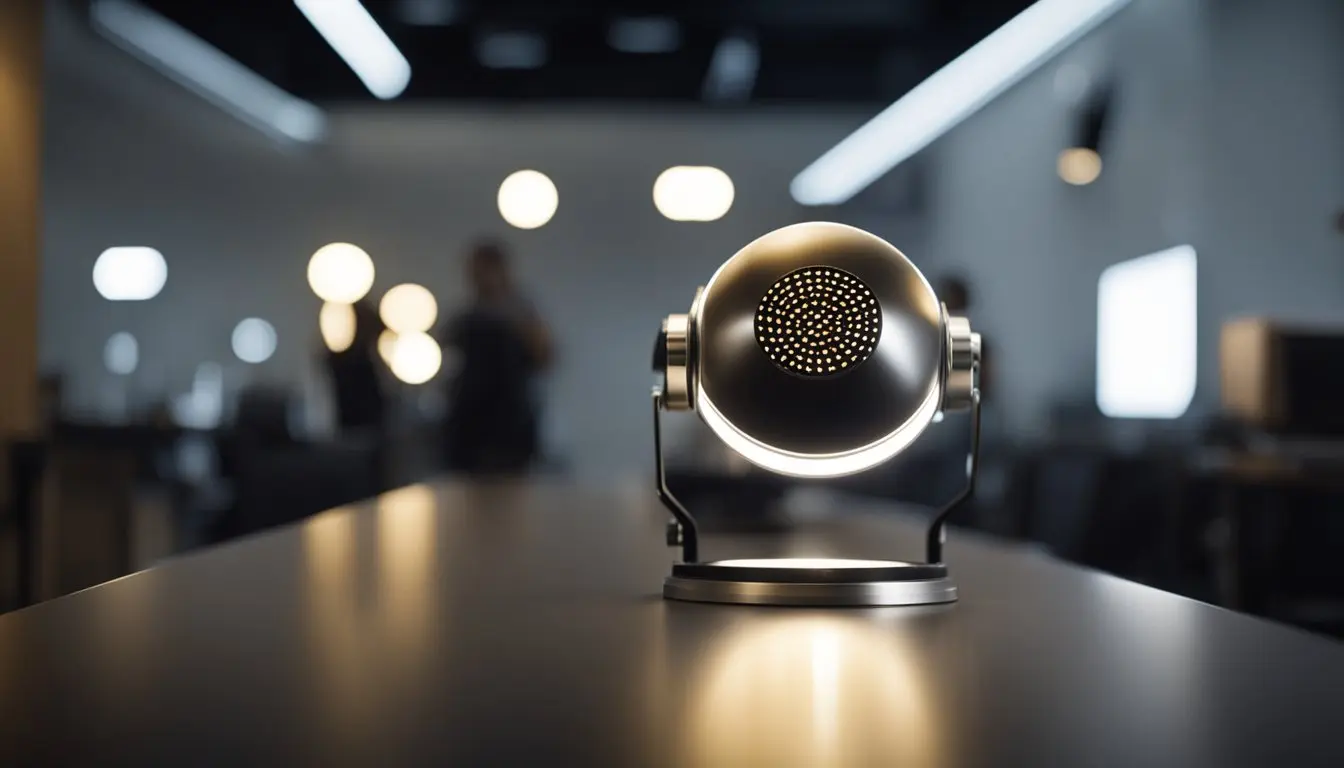
The key to an LED’s efficiency lies in its directional light emission. Unlike other light sources that emit light and heat in all directions, LEDs focus the light in a particular order, optimizing energy utilization in numerous applications. This targeted approach to lighting, along with its long-lasting properties, has made LEDs a popular choice for both commercial and residential use.
In addition to their energy-saving benefits, LEDs offer significant advantages over traditional lighting sources. Due to their compact size, LEDs can be incorporated into various forms and designs, providing new opportunities for innovative and sustainable lighting solutions. With a growing global emphasis on environmental conservation and sustainable living, LEDs continue to pave the way for the future of lighting technology.
The history of LED (Light Emitting Diode) technology dates back to the early 20th century. 1907 British experimenter H.J. Round first observed electroluminescence in silicon carbide crystals. However, Russian scientist Oleg Losev first studied the phenomenon and published “Luminous Carborundum Detector and Detection with Crystals” in 1927. Nevertheless, it took several decades for further research to bring LED lighting to practical use.
In 1961, engineers James R. Biard and Gary Pittman discovered infrared light emission while working at Texas Instruments. They filed a patent for an infrared LED, the first practical LED lighting.
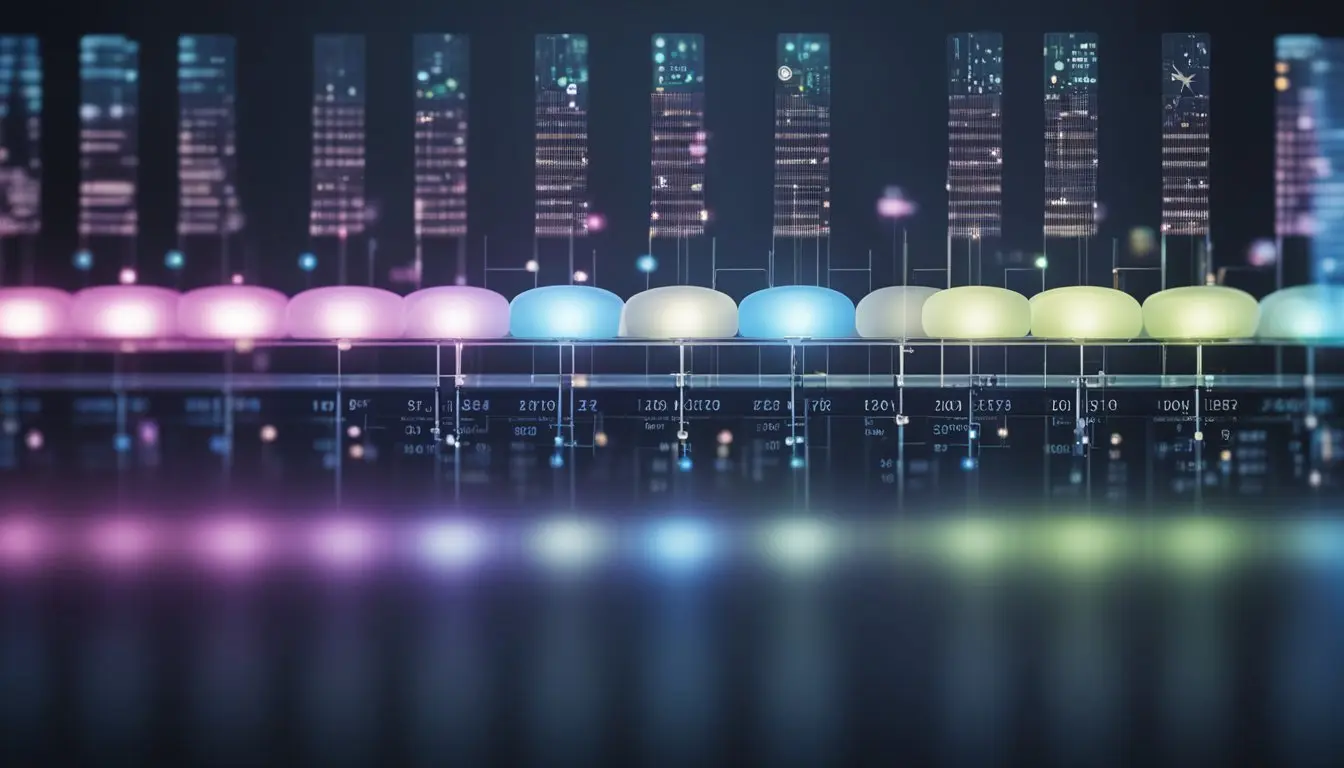
The first visible light LED capable of emitting visible light in the red spectrum was developed by Nick Holonyak Jr. in 1962 while working at General Electric. This significant milestone laid the foundation for further improvements and advancements in LED technology. In 1972, M. George Craford, a graduate student of Holonyak, invented the first yellow LED and an even brighter red LED.
●1962: Nick Holonyak Jr. developed the first visible red LED.
●1972: M. George Craford created the first yellow and brighter red LED.
Further technological advancements led to the development of high-power blue light sources, ultimately creating a revolution in LED lighting. One notable inventor responsible for this breakthrough was Shuji Nakamura. The availability of blue LEDs allowed for the development of technologies like Blu-ray and paved the way for the creation of white light by combining blue, green, and red LEDs.
Further technological advancements led to the development of high-power blue light sources, ultimately creating a revolution in LED lighting. One notable inventor responsible for this breakthrough was Shuji Nakamura. The availability of blue LEDs allowed for the development of technologies like Blu-ray and paved the way for the creation of white light by combining blue, green, and red LEDs.
An LED (Light Emitting Diode) is a semiconductor that emits light when an electric current passes through it. The primary components of an LED are a diode, which acts as a one-way gate for the flow of electric current, and the junction where two types of semiconductor material meet. A combination of forms this junction:
●N-type semiconductor: Rich in free electrons
●P-type semiconductor: Deficient in electrons, creating spaces called “holes.”
These semiconductors work together to facilitate the movement of electrons and holes in the LED structure.
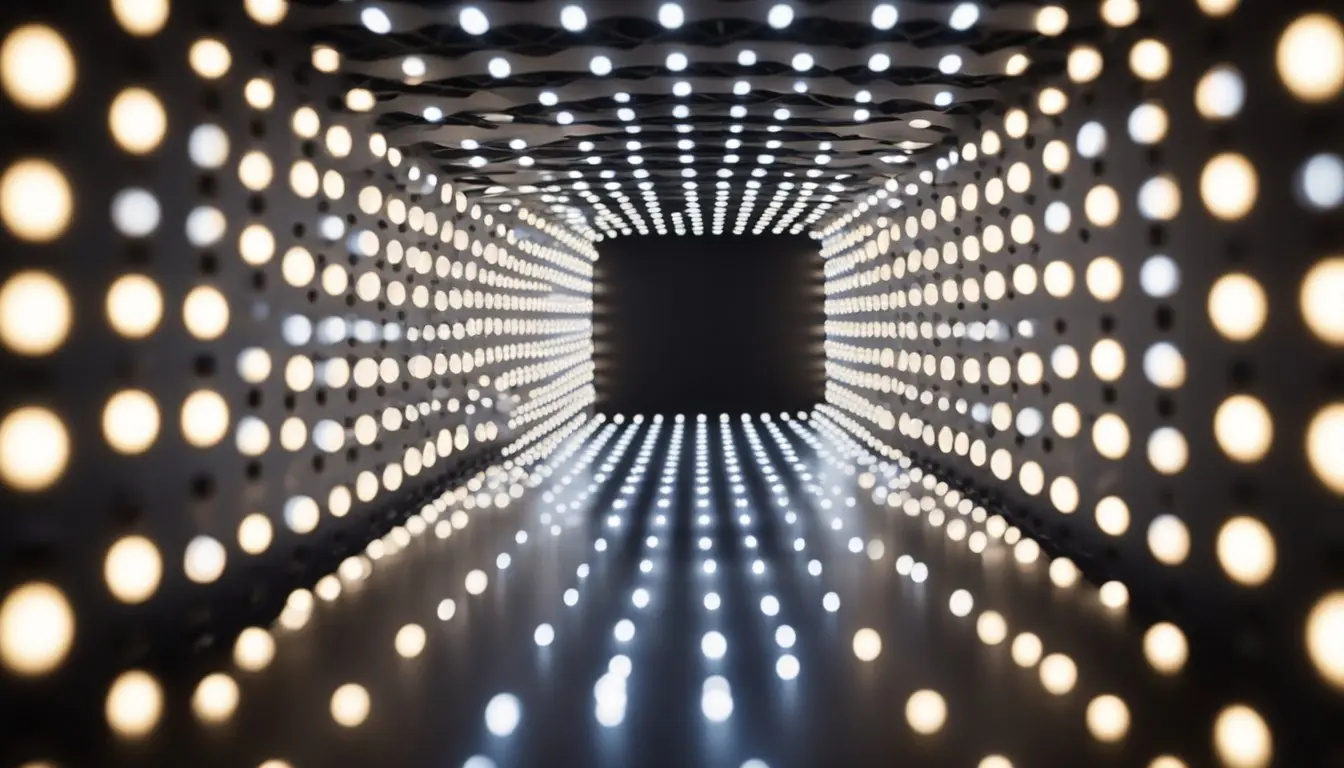
When a voltage is applied across the LED, electrons from the N-type semiconductor move toward the P-type semiconductor, filling the available holes. This process is known as recombination. The energy difference between the electrons and holes is released upon recombination as photons – light particles.
The color of the emitted light depends on the band gap – the energy difference between the conduction band (where electrons are free to move) and the valence band (where electrons are bound to atoms). Different materials have different band gaps and, thus, produce different colors of light.
Here is a brief overview of the process:
1.A voltage is applied across the LED
2.Electrons move from N-type to P-type semiconductor
3.Recombination of electrons and holes
4.Photons are released as light.
Various types are available in the market, each with specific characteristics and applications. Some common categories include:
●High-brightness LEDs: These potent LEDs emit intense light and are often used in outdoor applications, such as streetlights and traffic lights.
●Low-power LEDs: These are suitable for less demanding applications, such as indicator lights and small displays.
●Infrared LEDs: Emitting light in the infrared spectrum, these LEDs are used in remote controls, night vision equipment, and security systems.
As LED technology advances, LEDs’ efficiency, color attributes, and light distribution improve, making them even more versatile and widely utilized in various applications.
LED lighting technology is highly energy-efficient, using at least 75% less energy than incandescent lighting, which results in significant energy savings for consumers. This efficiency is mainly because LEDs convert more energy into visible light, whereas traditional light bulbs waste energy as heat.
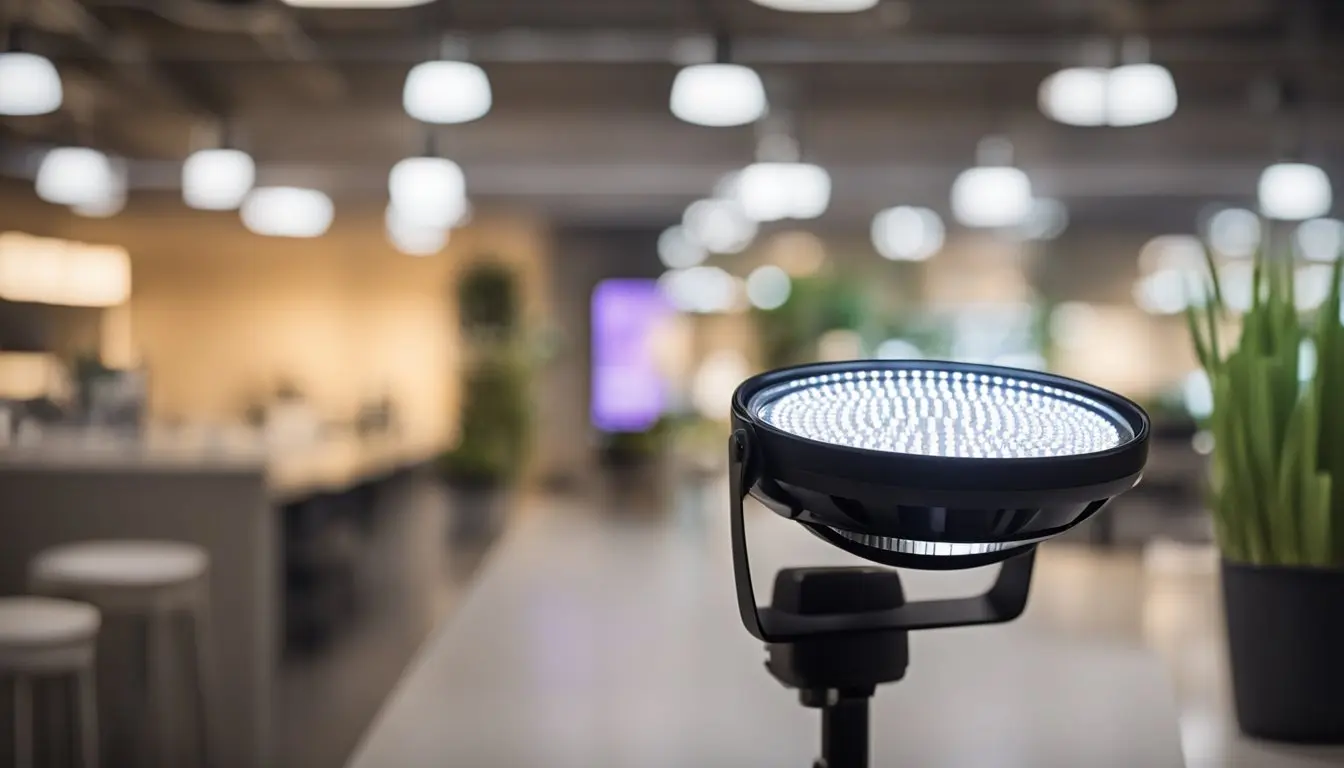
With a long lifespan, LED lights last up to 25 times longer than incandescent lights, reducing the need for frequent replacements. This durability is an essential factor in the benefits of LEDs, as it results in lower maintenance and replacement costs over time.
Due to their solid-state construction, LEDs also have an increased resilience against heat, shock, and vibrations. This makes them an ideal choice for various applications where traditional lighting solutions may not be suitable.
LEDs positively impact the environment in multiple ways:
1.Reduced energy consumption: As mentioned above, LEDs require significantly less power to produce the same amount of visible light as incandescent bulbs, resulting in reduced power consumption and lower greenhouse gas emissions.
2.Longer lifespan: The extended lifespan of LEDs reduces the frequency of replacements and thus lessens the waste generated from the disposal of broken or spent bulbs.
3.Lower heat emission: The lower heat emission from LED lights minimizes the need for additional cooling systems near the lights, saving energy and resources in temperature regulation.
By taking advantage of LED lighting technology’s energy efficiency, longevity, and ecological benefits, consumers can enjoy considerable savings and contribute to a more sustainable future.
This section will compare LED lighting to other familiar light sources, such as incandescent bulbs, compact fluorescent lamps (CFLs), and fluorescent lamps.
LEDs and incandescent bulbs differ in operation and efficiency. Incandescent bulbs produce light by passing an electric current through a filament, which heats up and emits visible light. Conversely, LEDs create light by passing a current through a microchip, illuminating tiny light sources known as LEDs. This process produces far less heat, with any generated heat absorbed by a heat sink.
Efficiency: LEDs are significantly more energy-efficient than incandescent bulbs, producing more light per watt of energy. This means they consume less electricity for the same amount of light output.
Lifespan: The lifespan of an LED light product is typically much longer than that of an incandescent bulb. A quality LED bulb can last 3 to 5 times longer than a CFL and 30 times longer than an incandescent bulb.
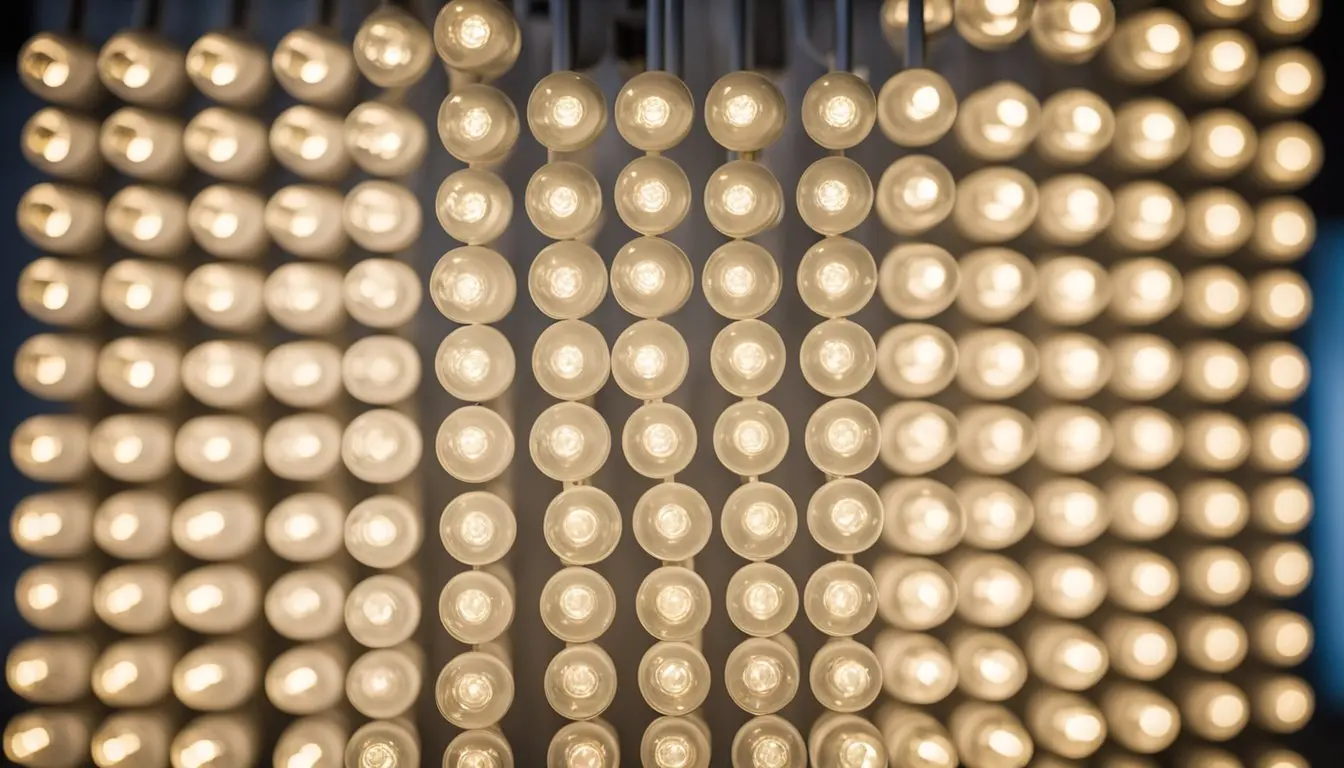
Compact fluorescent lamps (CFLs) are another type of energy-saving light source. They work by passing an electric current through a gas-filled tube, creating ultraviolet light converted into visible light by a phosphor coating.
Energy consumption: While CFLs are more energy-efficient than incandescent bulbs, they are still less efficient than LEDs. LEDs use less energy to produce the same amount of light compared to CFLs.
Lifespan: LED lighting products typically last longer than incandescent bulbs and CFLs. As mentioned, a good quality LED bulb can last 3 to 5 times longer than a CFL.
Like CFLs, fluorescent lamps produce light by passing an electric current through a gas-filled tube. However, their design usually includes a larger diameter tube, which makes them more suitable for larger spaces.
Brightness: LEDs are generally brighter than fluorescent lamps, producing more lumens per watt. LEDs often provide higher quality and more intense light than fluorescent lamps.
Color Rendering Index (CRI): The CRI measures the light’s quality, with higher CRI values leading to brighter, more accurate color representation. LEDs typically have a higher CRI than fluorescent lamps, improving overall performance.
In conclusion, LEDs offer numerous advantages over incandescent bulbs, CFLs, and fluorescent lamps in terms of efficiency, lifespan, and light quality. Their versatile applications make them an excellent choice for various lighting needs.
LED lighting has become increasingly popular in residential and commercial settings due to its energy efficiency and long lifespan. In homes, LED lights are commonly used for task lighting, such as under cabinet lighting, and as a replacement for traditional incandescent and CFL bulbs. The use of LED lights in appliances, like refrigerators and ovens, is also growing.
Commercial spaces often utilize LED lighting for various purposes, such as signage, display cases, and security. LED lights’ energy savings and reduced maintenance costs appeal to businesses.
In industrial settings, LED lighting offers significant advantages over traditional lighting options. The directional nature of LEDs provides improved illumination in specific areas, enhancing safety and productivity. LED lights are commonly used in factories, warehouses, and outdoor spaces.
LED technology has transformed street lighting as well. Modern LED street lights are designed to provide better visibility, consume less energy, and last longer than traditional street lights. Many cities have already started to replace their old street lights with energy-efficient LED lights.
LEDs also play a crucial role in specialized devices and indicators. They are widely used in various electronic devices, including remote controls, mobile phones, and computer screens. LEDs’ small size and low power consumption suit these applications.
Furthermore, LED displays and signs have become famous for advertising and communication. They offer bright, easily customizable visuals ideal for indoor and outdoor use. LED signs can be found in retail stores, stadiums, and transit centers, among other locations.
LED lighting has revolutionized various industries, offering more energy-efficient and versatile solutions. With ongoing advancements in LED technology, their applications continue to grow and evolve.
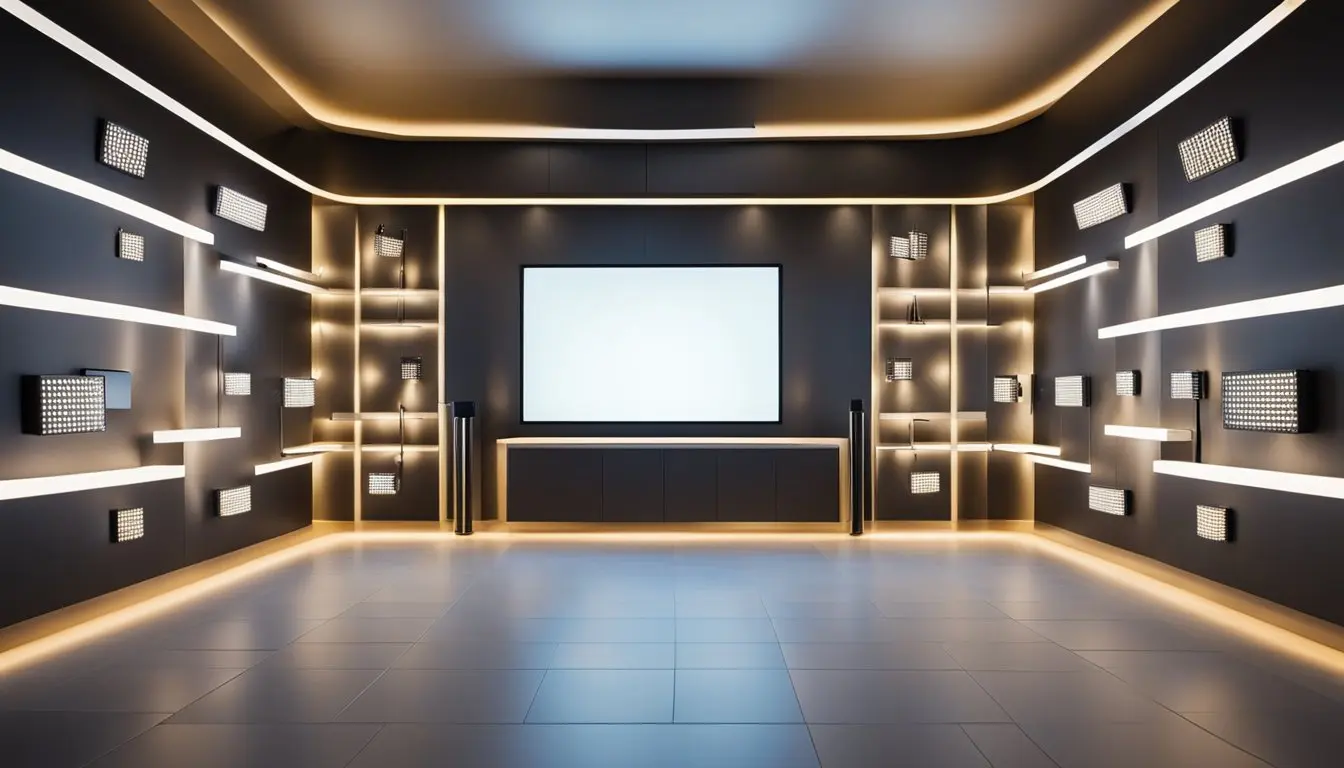
One important aspect of LED light is its brightness. The unit of measurement for brightness in LED lights is lumens (lm), which indicates the amount of visible light emitted by a source. Higher lumens equate to higher intelligence. For instance, a standard household LED bulb typically has around 800 lm, whereas large commercial fixtures, such as LED shoe boxes or stadium lights, can reach up to 160,000 lm per fixture.
LED lights also come in various color temperatures to suit different preferences and
environments. Color temperature is measured in Kelvin (K). Lower Kelvin values correspond to warmer light that resembles the yellowish hue of incandescent bulbs, while higher Kelvin values produce more fantastic light with whiter or bluer tones. To give you a better understanding, here’s a simple color temperature chart:
| Color Temperature (K) | Description |
| 2700 – 3000 | Warm White |
| 3000 – 3500 | Soft White |
| 3500 – 4100 | Cool White |
| 4100 – 5500 | Daylight White |
| 5500 and above | Cool Daylight |
The quality of LED light depends on the LED chip used in the manufacturing process. U.S. and Japanese manufacturers such as Cree and Nichia produce some of the best chips. However, in recent years, prominent Chinese and Korean companies like Epistar, San’an Opto, and Seoul Viosys have also made good-quality LEDs.
LEDs display a broad range of colors in the visible light spectrum, resulting in the ability to produce various shades of white light. This is achieved by combining different colors of LEDs to create a balanced white light or using phosphor coatings that convert blue or ultraviolet light into white light. This versatility in color and brightness makes LED lights suitable for various applications, from cozy home environments to bright commercial settings.
Designers of LED lighting solutions must take numerous aspects into consideration to create efficient and high-quality products. This section will explore some of the most significant technical challenges in LED design and their corresponding solutions.
One of the central challenges of LED design is thermal management. The heat generated by LEDs can diminish their lifespan and performance. Designers often use heat sinks or other cooling systems to ensure proper thermal management to transfer heat from the LED components. Some common materials utilized for this purpose include aluminum and copper.
Moreover, thermal management can be further optimized through innovative heat sink designs, convection cooling, and the integration of thermally-conductive materials within the LED system.
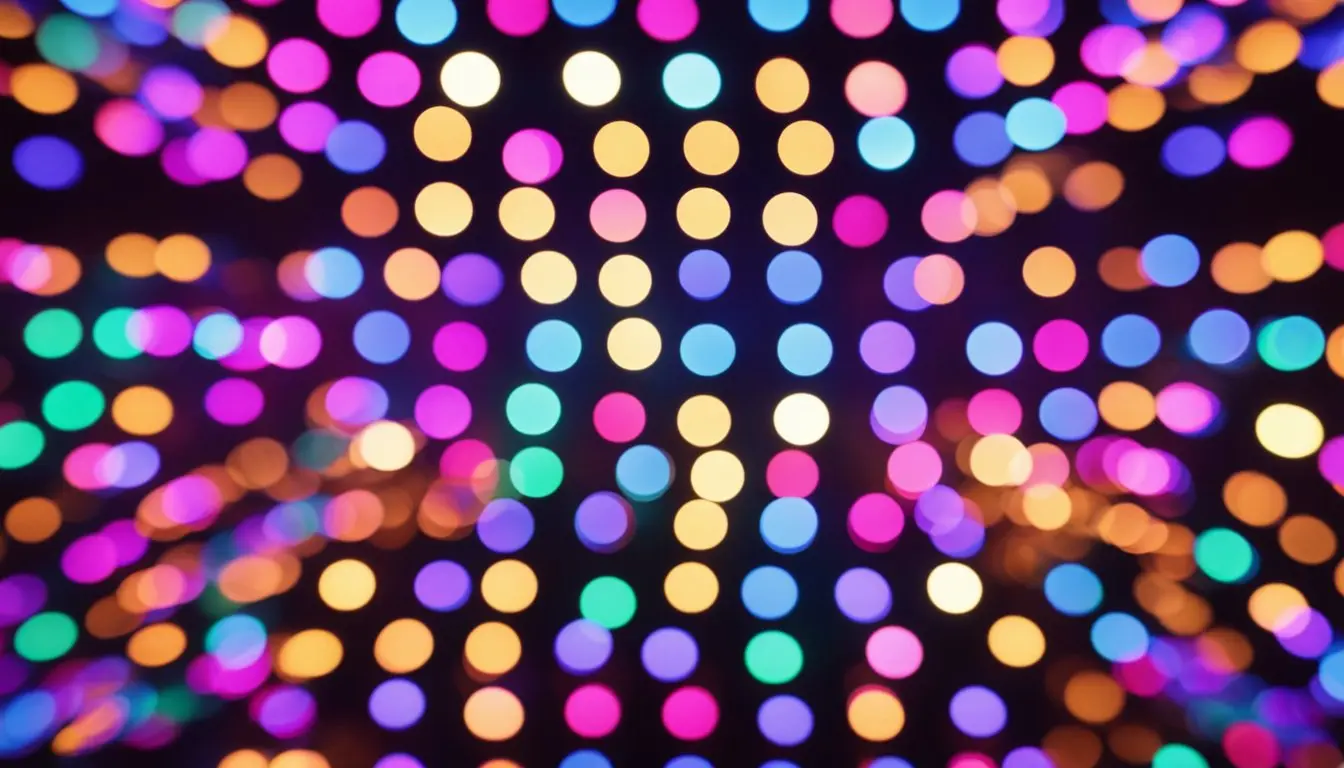
Managing the electrical characteristics of LEDs is another vital aspect of their design. Power, voltage, and current must be carefully controlled to ensure smooth, consistent lighting without flickering or abrupt interruptions. Designers can address these issues by using constant drivers that regulate the current flow through the LED, thereby maintaining consistent brightness levels.
Additionally, AC-to-DC converters are often employed to supply stable power to LEDs, as these lights typically operate on direct current (DC) but primarily receive power from alternating current (AC) sources.
Improving the efficiency of LED lighting systems is crucial for their continued adoption and expansion in the market. Numerous factors can impact an LED’s efficiency, including:
In conclusion, addressing the thermal management, electrical characteristics, and efficiency optimization challenges in LED design will contribute to developing superior LED-based lighting systems.
LED technology has come a long way since its inception, but even more advancements are expected. One such area of innovation is the development of organic materials for use in LED lights. Organic Light-Emitting Diodes (OLED) are made from thin sheets of organic material, offering the potential for lower costs and better flexibility in lighting design. This technology is becoming increasingly popular for display use and can expand into other applications.
In addition to OLEDs, new LED lights are being developed with greater energy efficiency in mind. This will benefit the environment by reducing energy consumption and helping consumers save on electricity costs. Some other potential developments include:
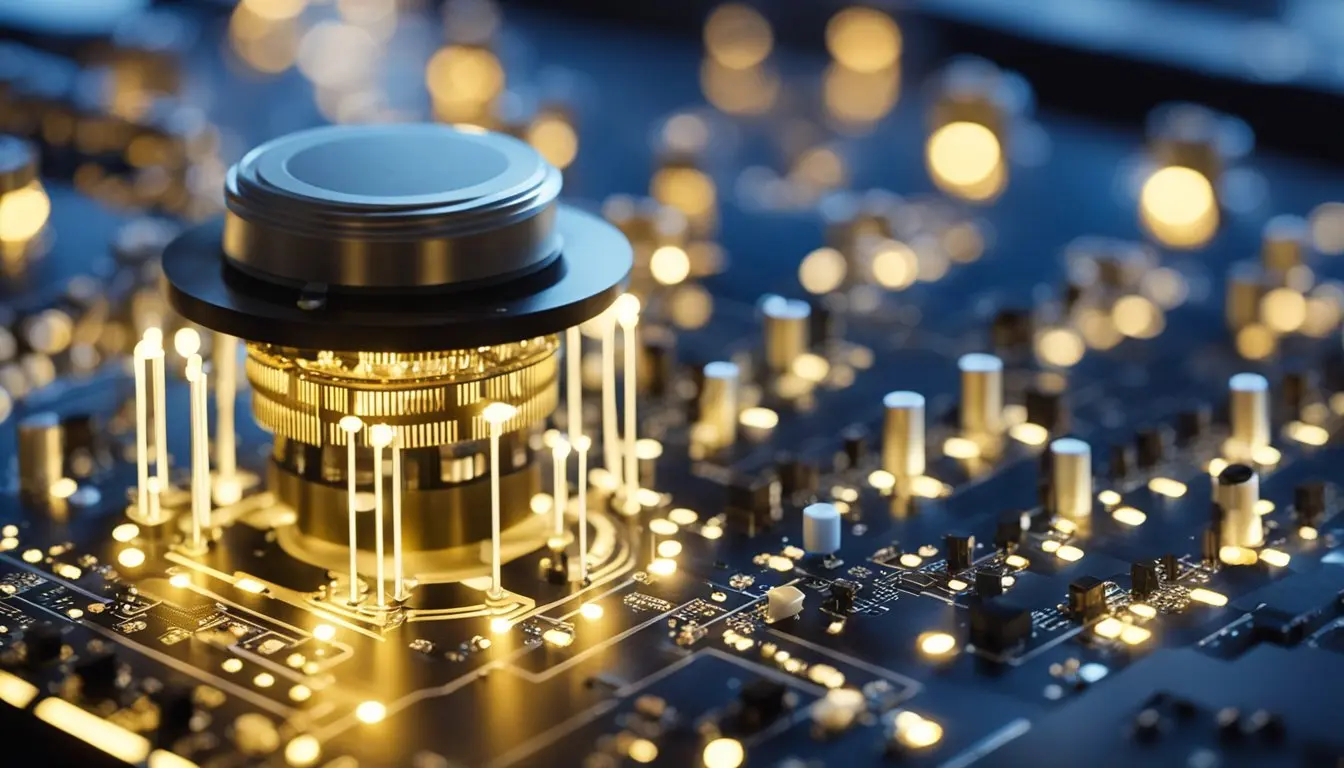
Incorporating LED lights into intelligent technology and the Internet of Things (IoT) is another critical aspect of the future of LED technology. IoT-enabled LED lighting allows users to control lighting remotely, optimize energy usage, and enhance security. An auspicious development in LED and intelligent technology integration is LiFi (Light Fidelity).
LiFi is a technology that uses LED light for data transmission, offering speeds up to 100 times faster than traditional WiFi. It is anticipated that LiFi could eventually replace WiFi, providing quicker and more efficient internet connectivity. Additionally, LED lights in LiFi technology can contribute to energy conservation by optimizing energy usage through data-driven insights.
Some of the benefits of integrating LED lights with intelligent technology include:
In summary, the future of LED technology remains bright and promising as innovations continue to emerge in energy efficiency, intelligent technology integration, and the development of organic materials such as OLEDs. These advancements will make LED lights more attractive to consumers and contribute to a more sustainable future.
LED lights (Light Emitting Diodes) are a more energy-efficient alternative to traditional lighting solutions such as incandescent and fluorescent bulbs. They have a longer lifespan, lower energy consumption, and reduced heat emissions. Additionally, LED lights offer better color rendering and customizable light distribution.
LED lights are versatile and can be used in various residential, commercial, and industrial applications. They are commonly used in homes for general lighting, task lighting, and decorative purposes. They’re used for offices, retail stores, and public spaces in commercial settings. Industrial applications include factories, warehouses, and outdoor lighting like streetlights and traffic signals.
An LED functions by passing an electrical current through a microchip. This electrical current illuminates the tiny light sources called LEDs, producing visible light. LEDs are more efficient than incandescent bulbs, which generate light through heated filaments because they generate minimal heat and convert more energy into light.
The adoption of LED lighting began in the early 2000s and became more prevalent throughout the decade. Advances in technology and manufacturing led to increased efficiency and reduced costs, making them more accessible and popular among consumers. LED lights are widely used in various settings due to their numerous benefits.
LED lights have several advantages over incandescent bulbs, including:
LED light strips have become popular in contemporary lighting design due to their flexibility, versatility, and energy efficiency. They can be easily cut to length and installed in various locations, making it simple to create custom lighting solutions. Typical applications include accent lighting, under-cabinet lighting, and decorative effects in residential and commercial settings. LED strips also come in various colors and brightness levels, allowing endless design possibilities.